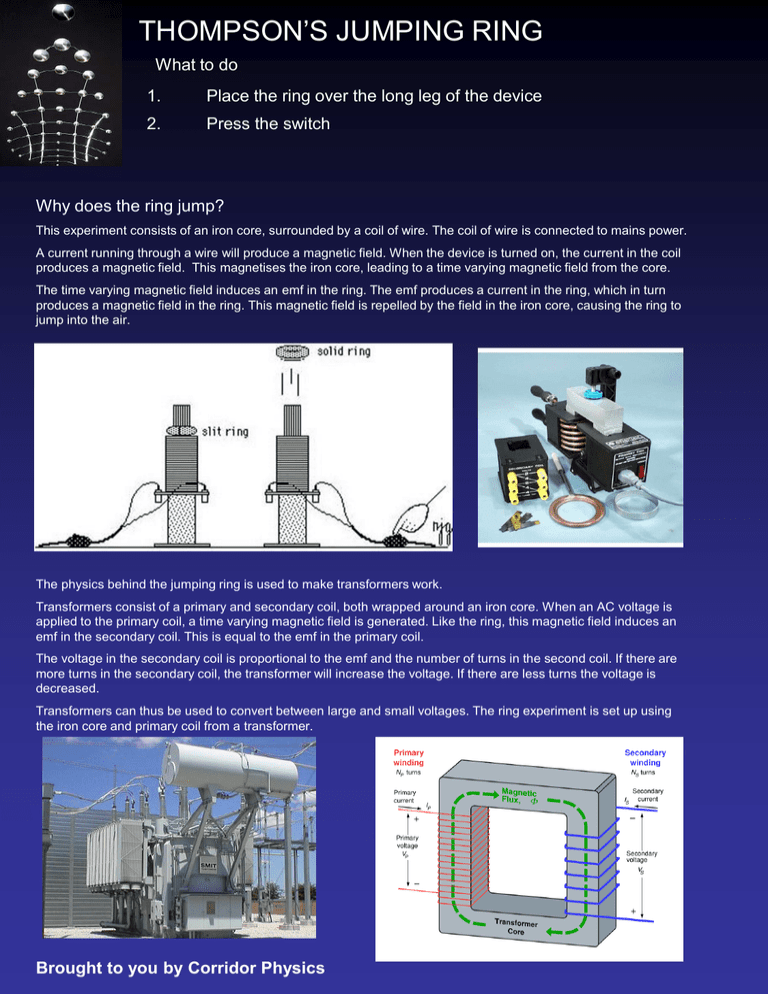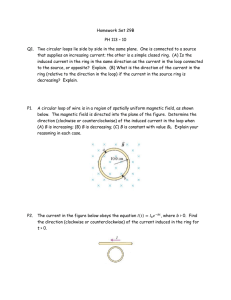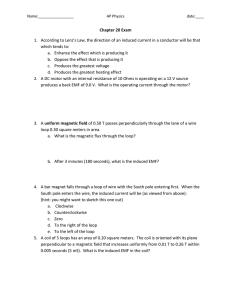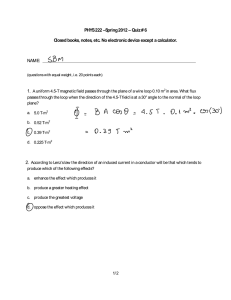THOMPSON`S JUMPING RING
advertisement

THOMPSON’S JUMPING RING What to do 1. Place the ring over the long leg of the device 2. Press the switch Why does the ring jump? This experiment consists of an iron core, surrounded by a coil of wire. The coil of wire is connected to mains power. A current running through a wire will produce a magnetic field. When the device is turned on, the current in the coil produces a magnetic field. This magnetises the iron core, leading to a time varying magnetic field from the core. The time varying magnetic field induces an emf in the ring. The emf produces a current in the ring, which in turn produces a magnetic field in the ring. This magnetic field is repelled by the field in the iron core, causing the ring to jump into the air. The physics behind the jumping ring is used to make transformers work. Transformers consist of a primary and secondary coil, both wrapped around an iron core. When an AC voltage is applied to the primary coil, a time varying magnetic field is generated. Like the ring, this magnetic field induces an emf in the secondary coil. This is equal to the emf in the primary coil. The voltage in the secondary coil is proportional to the emf and the number of turns in the second coil. If there are more turns in the secondary coil, the transformer will increase the voltage. If there are less turns the voltage is decreased. Transformers can thus be used to convert between large and small voltages. The ring experiment is set up using the iron core and primary coil from a transformer. Brought to you by Corridor Physics





